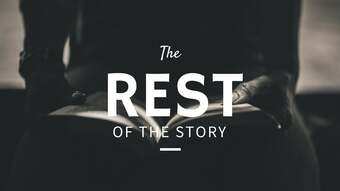
Most businesses are currently struggling to fill jobs with qualified people. According to the latest Bureau of Labor and Statistics (BLS) data there are now more than 9M job openings - up 12% from the previous month. The time and cost to fill job openings is also increasing. Both of these factors can contribute to lost sales and missed market share opportunities. So what’s the answer? I believe it’s time to step back and follow a tried and true recipe. It will help ensure long-term consistency and better control your time and costs. But, you have to follow the recipe.
For illustration purposes, let’s focus for just a minute on the picture above. June is peak strawberry season in North America and our family’s small, raised-bed crop has been extra delicious this year. In our home we love an old fashioned baking powder biscuit recipe with our fresh juicy strawberries and fluffy whipped cream. There are only six ingredients in the biscuit recipe and most are always on hand in our kitchen. Both prep and bake time for the biscuits are minimal.
But over the years, we have thrown a few batches away. We made simple mistakes including: not reading the recipe all the way through before starting (we already knew how to do it); assuming we had already mastered the basic baking skills needed; leaving out or substituting an ingredient; measuring wrong; or adjusting the oven temp or cook time to make it more convenient for us. The delicious, light, fluffy, homemade biscuits did not turn out as planned.
These same baking mistakes have been repeated over and over again with a fundamental “People Strategy” and its’ recipe. The recipe for success in attracting, developing and retaining talent is employee engagement. Sorry, the raw truth hurts sometimes but if your current employees don’t consistently give your business their heads (problem-solving and innovative ideas); hearts (commitment not just compliance); hands (physical work); and habits (consistent actions and behaviors), why would others want to join and do it? Step one must be to keep the talent you already have and engage them. They can be your best advocates and recruiters by ‘selling or influencing’ others based on how they feel and their beliefs about your workplace culture. They are insiders and can get asked very easily for their opinions - both face-to-face and electronically.
Like our ‘biscuit recipe’ mishaps, many organizations made similar, basic mistakes in the execution of their employee engagement plan. They did not:
- Read the whole recipe before starting and got at best short-term behavior compliance. There was little sustainable leadership or cultural change.
- Master foundational leadership skills where supervisors and managers learned to build trust; value, challenge and support employees; and show genuine interest and concern. Many perceived this as too simplistic and not sophisticated enough.
- Align key people processes in their culture that would Inform, Teach, and Reinforce the importance of employee engagement.
- Manage performance and allowed some leaders to take short-cuts, skip steps, and get countless exceptions to key ingredients and processes. There was a lack of personal accountability for engagement.
- Measure success by everyday things they could look and listen to but rather put all their ‘metric eggs’ into a single survey score.
- Establish realistic timeframes for change. Everything got accelerated or cut short if a survey score was hit.
P.S. June 14th is National Strawberry Shortcake Day. Why not reflect on this message while you enjoy a piece of this classic summer dessert treat?












 RSS Feed
RSS Feed


